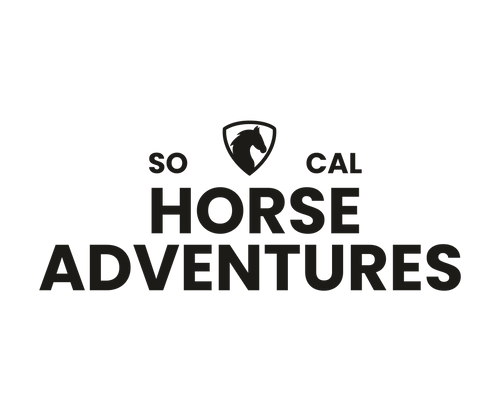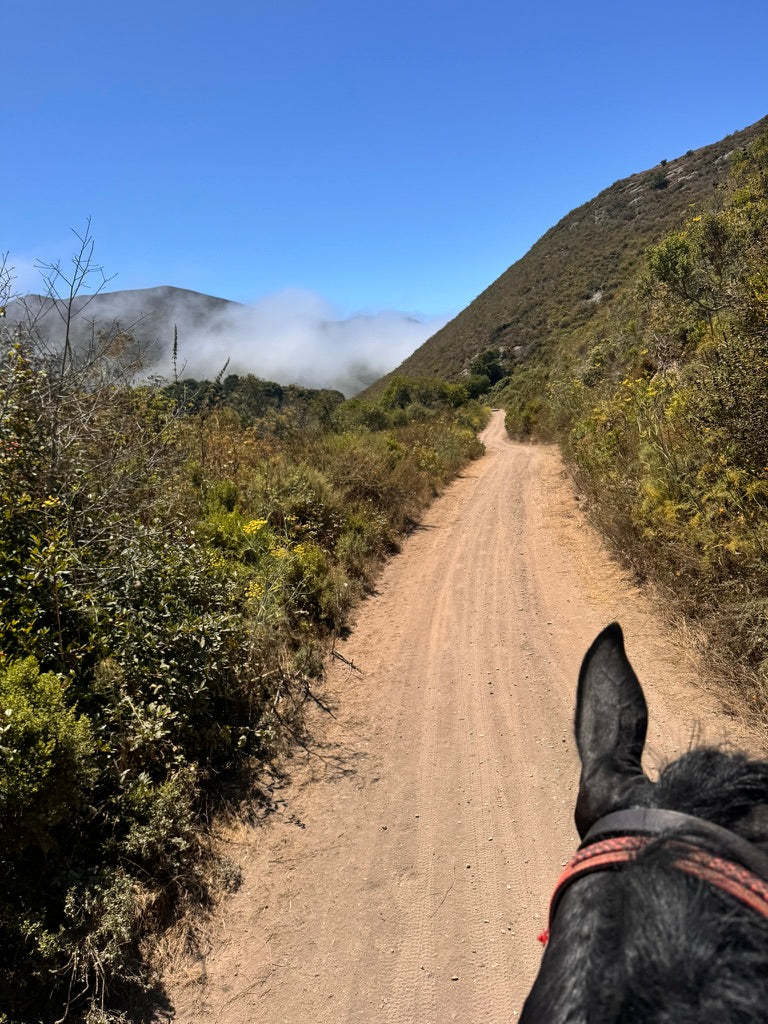When someone tells me their horse is “trail broke,” I usually smile and nod — and then ask a few follow-up questions.
Does it spook at plastic bags?
Does it rush home on the way back?
Can it walk, trot, and canter on a loose rein?
Can it go out alone and in a group without losing its mind?
Because in my experience, “trail broke” often just means the horse has survived a few rides without major incident. That doesn’t mean it’s actually safe — or enjoyable to ride.
The Myth of the “Trail Broke” Horse
A horse that’s truly trail safe doesn’t just tolerate the trail — it understands it. It knows how to handle the unexpected: barking dogs, rustling trash, steep drop-offs, bikes flying by. It doesn’t rely on the horse in front to hold it together. It doesn’t need a tight rein to keep from taking off.
Most horses never get there. Not because they’re bad horses, but because they’ve never had the kind of training that actually prepares them for real-world riding.
Short Rides Don’t Cut It
A couple of loops around the barn isn’t enough. Even hauling out once or twice a week to a local trailhead won’t create a truly dependable partner. Why? Because the world is chaotic — and horses need repetition, variety, and movement to become confident in it.
One day it’s a plastic bag in the wind.
Next day it’s a sudden dirt biker.
Then it’s a bridge with water underneath, or a gust of wind, or a kid with a balloon.
If your horse only rides in familiar places for short periods, they don’t get the chance to learn how to adapt. They’re just getting through it.
The 300 Mile Approach
That’s why we developed our 300 Mile Bootcamp. We’re not reinventing the wheel here — we’re just giving horses what they’ve always needed: miles, exposure, and consistency.
Over the course of 4–8 weeks, we take your horse on 20 long trail rides, each one 10–20 miles. But this isn’t just about riding far. It’s about where and how we ride.
-
Day 1 might be a steep mountain road
-
Day 5 could be a ride through a city park with traffic and pedestrians
-
Day 10? A river crossing in the desert
-
We go through cattle pastures, neighborhoods, busy intersections, tunnels, train crossings
Every ride is different. Every ride challenges the horse in a new way. And because we do it consistently, they learn to process pressure, recover quickly, and look to the rider for guidance.
What Safety Actually Looks Like
By the end of our program, horses don’t just stop spooking. They start thinking.
They walk forward without rushing.
They stand still when asked.
They load, trailer, and ride in new places without meltdowns. They actually become to love the trailer. In the morning getting into the trailer means we are going out to have fun. After the ride it means water and hay plus we're going home to rest.
They walk, trot, and canter on a loose rein without being held together.
They relax even after a long gallop.
They become rideable. And that’s the whole point.
Safety isn’t about removing every stimulus — it’s about teaching horses how to handle stimulus. And that takes time, repetition, and intention.
Real Training for Real Horses
Our program isn’t flashy. There’s no special equipment, no gimmicks, no magic bit. Just real horses doing real work, every day. At first we ride in a simple barrel snaffles (the most tongue relief and softest action) and most horses transition to side pull bridles or even just halters with ropes within a few weeks.
We ride in the wind. We ride in the cold. We ride when the dog next door is barking and the neighbors are firing up their tractor. That’s how horses become solid — not by hiding from chaos, but by learning how to move through it.
Final Thoughts
If your horse is “trail broke” but still hard to ride, you’re not alone. Most horses aren’t given the kind of training that actually prepares them for life outside the arena.
But we can change that.
Because here’s something I’ve seen again and again — horses love being on the trail when they understand it. Once they feel confident, once they’re not on edge or overwhelmed, they actually start to look forward to being out.
Their ears go forward.
They swing through their backs.
They relax into the walk and start taking in the world instead of fearing it.
The trail becomes a place of purpose and peace — not panic.
Give us a few weeks, and we’ll give you back a horse that’s confident, calm, and truly enjoys the ride — wherever the trail takes you.

